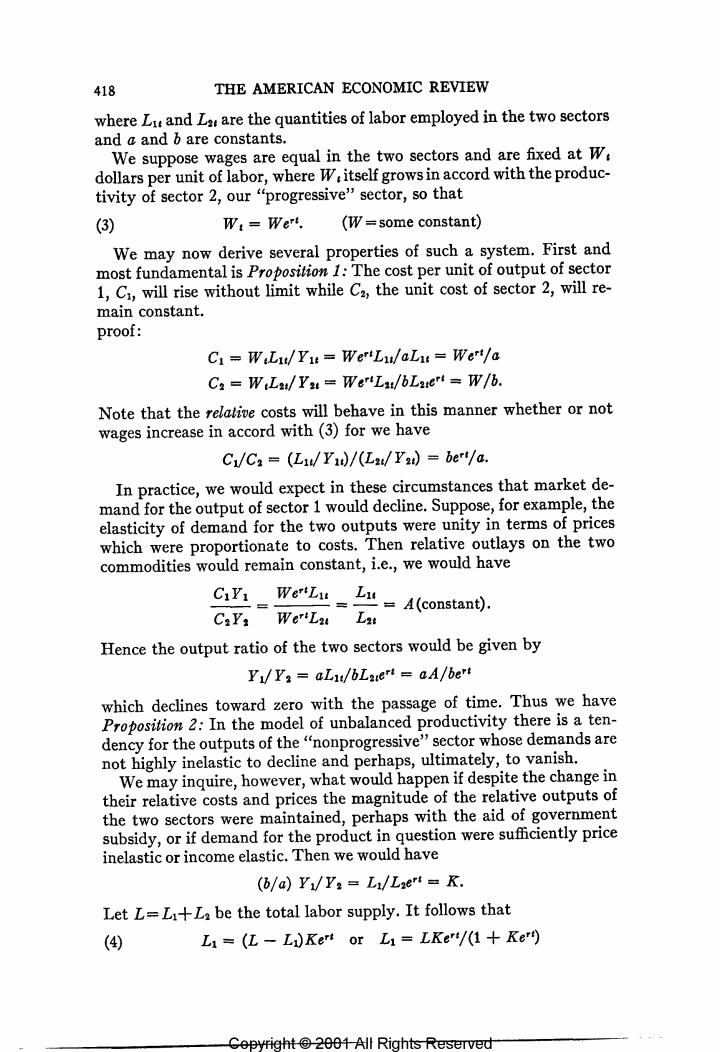正在加载图片...

418 THE AMERICAN ECONOMIC REVIEW where L and La are the quantities of labor employed in the two sectors and a and b are constants. We suppose wages are equal in the two sectors and are fixed at We dollars pe unit of labor,where W:itself grows in accord with the produc- tivity of sector 2,our"progressive"sector,so that Wi=We". (W=some constant) We may now derive several properties of such a system.First and most fundamental is Proposition 1:The cost per unit of output 1,Ci,will rise without limit while Ca,the unit cost of sector 2,will re- main constant. proof: C1=WiLu/Yu=We"Lu/aLu Wer!/a Ca=WLa/Y=We"La/bLate"!=W/b. Note that the relative costs will behave in this manner whether or not wages increase in accord with (3)for we have Cv/Ca=(L/Y)/(La/Y)=be"!/a. In practice,we would expect in these circumstances that market de mand for the output of sector 1 would decline.Suppose,for example,the elasticity of demand for the two outputs were unity in terms of prices which we re prop ortio nate to costs.Then relative outlays on the two commodities would remain constant,i.e,we would have c_-0 Lu(constant). Hence the output ratio of the two sectors would be given by Y1/Y:=aLut/bLate"t aA/bert which declines toward zero with the passage of time.Thus we have Proposition 2:In the model of unbalanced productivity there is a ten- dency to or the ts of the"nonprogressive"sector whose demands are c to decline perha ultimately,to vanish. We may inquire,however,wh t wo n if despite the change in their relative costs and prices th e magnitud elative outputs of the two sectors were maintained,perhaps with the aid of nment bymndothe prodcteruntprice inelastic or income elastic.Then we would have (b/a)Y1/Y:=L/Le"t K. LetL=L+La be the total labor supply.It follows that (④) L=(L-L)Ke"t or L LKe"t/(1+Ke") epyright2001-All Rights Reserved